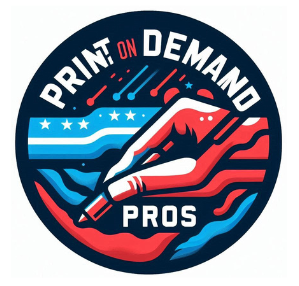Getting started with print on demand can feel like stepping into a world of endless possibilities. It’s just about knowing how to navigate it right. Print on demand, or POD as we’ll call it here, is where you use third-party companies to print and ship products only once a customer places an order. This makes it a low-risk option for budding entrepreneurs, letting you focus more on creative parts without worrying about inventory or upfront costs.
Before jumping into the fun stuff, understanding your market is absolutely key. Ever hear the saying, “Don’t try to sell ice to an Eskimo”? That’s kinda what market research avoids. It’s about figuring out who your customers actually are, what they want, and how you can give it to them better than anyone else.
Once you’ve got a handle on who you want to reach, it’s time to choose a solid POD partner. There are a ton out there, each with their own perks and quirks. Do you want fast shipping, superior print quality, or maybe the lowest prices? It’s a balancing act, and my best advice is to read reviews and even make test orders yourself to check out how they work in real life.
Design Dilemmas: Avoiding Common Pitfalls in Product Creation
When you’re just starting out with a print on demand business, crafting unique designs is what sets you apart in a sea of options. It’s like going to a party with your best outfit on—you want to catch eyes and turn heads. So, originality and creativity should be your best friends here. Try not to just replicate what’s trending, but add your own twist. Think outside the box and maybe even draw inspiration from personal passions or stories.
Ever been overwhelmed by a menu with a million options? That’s how your customers might feel if you present them with too many design choices. Fewer options make choice easier and often lead to better sales. Keep it simple: a curated selection of polished designs often beats a cluttered offering.
Keeping your designs relevant is also key, especially when you consider seasons or special occasions. A snowflake print probably won’t do well in July, same as how a beach theme might fall flat during winter months. Tuning in to what’s timely not only helps you stay in sync with your audience but also boosts your chances of catching wider interest.
Marketing Mishaps: Effectively Promoting Your Print on Demand Products
When it comes to print on demand, a cool design isn’t much if no one knows about it. Marketing is where you make sure your brilliance doesn’t go unseen. It’s all about getting the word out to the right crowd—your target audience. Understanding what makes them tick is crucial to crafting messages that resonate and catch their attention.
Consistency is key in building a strong presence online. Imagine your social media like a TV channel; if you go off-air for too long, people forget you exist. Regular posts keep your brand part of the ongoing conversation. Plus, it builds relationship and trust with your audience, showing you’re active and engaged.
Data analytics isn’t just a buzzword—it’s your secret weapon. By analyzing what works and what doesn’t, you can fine-tune your strategies and even your products. It’s less about total guesswork and more about informed decision-making. This way, you can focus your efforts on advertising that actually delivers results.
Pricing Puzzles: Balancing Costs and Customer Attraction
Setting the right price for your print on demand products can literally make or break your business. Price too low, and you’re barely covering your costs; price too high, and you might scare off potential buyers. The goal is finding that sweet spot where you’re making a healthy profit but still offering great value.
To do this, understanding your profit margins is crucial. It’s not just about the cost of the t-shirt itself, but also what you’re paying for shipping, handling, and those all-so-important marketing expenses. Underpricing can be tempting to lure customers, but you’ve gotta remember the big picture—your bottom line.
Transparency goes a long way in pricing, especially when it comes to shipping and extra fees. Customers hate hidden costs cropping up last minute at checkout. Providing clear and honest pricing details not only builds trust but can also prevent cart abandonment.
Checking out the competition is one of the best ways to gauge where you should be sitting price-wise. Look at similar products in your niche—what are they charging? Are there perceived value adds that might justify a higher price on certain items? This is all part of smart pricing strategy that can guide you to that golden spot your customers can’t resist.
Customer Care Confusions: Building and Maintaining Trust
One thing you definitely can’t afford to overlook is customer service. In the world of print on demand, where competition’s fierce, stellar communication is like your secret sauce. When customers know they can reach you easily, it boosts their confidence in your brand and keeps them coming back.
Resolving issues swiftly is another crucial factor. Whether it’s about a delivery delay or a quality concern, being prompt in addressing such complaints not only helps you save face but also turns potentially negative experiences into positive ones. People remember how a problem’s solved more than the problem itself.
Encouraging feedback is like getting free gold nuggets of advice that can guide your business growth. Besides showing that you care about what your customers think, it gives you insights into what might need tweaking. This ongoing feedback loop can lead to improved products and happier customers, which is a win-win.
In the end, the way you handle your relations with customers can set the tone for your entire business relationship. Keeping lines open and being proactive ensures they feel seen and valued, which can set you apart from businesses that treat them as just another transaction.




his is a fantastic guide for anyone new to print on demand! I really appreciate the focus on market research and choosing the right POD partner—it’s so easy to overlook those steps when you’re excited to jump in. I’m curious, though, do you have any specific tools or platforms you recommend for conducting market research effectively?
This article on common mistakes in print-on-demand ventures is very insightful. I’m particularly interested in the point about underestimating the importance of niche selection. From your experience, how do you identify a profitable niche without oversaturating the market? Personally, I’ve found that thorough market research and testing different designs can help pinpoint what resonates with customers. Additionally, the emphasis on quality control is crucial. How do you ensure consistent quality across different suppliers? It’s a challenge I’ve faced, and I’m curious about your strategies for maintaining high standards while scaling up. What are your thoughts?